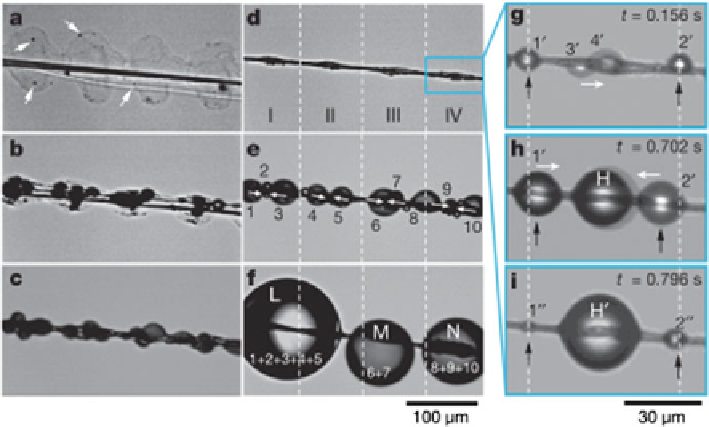Biomedical Engineering Reference
In-Depth Information
Fig. 9.13
In situ optical microscopic observation of directional water collection on spider silk in
mist. Reprinted with permission from [
208
]
of the spider silk leading to periodic surface energy gradient and difference in
Laplace pressure, both of which result in continuous condensation and directional
collection of water droplets (shown in Fig.
9.13
). Inspired by the special wet-
rebuilt structure of spider silk, they achieved to fabricate artificial fiber to mimic
the periodic structure and its directional water collection capability. According to
the above studies, superhydrophobic/hydrophilic patterned coatings are expected
to find wide applications in practical water harvest, microfluidics, and lab-on-chip
devices.
9.5.9
Bio-engineering
For various biomedical applications such as biosensors, protenmics, drug screen-
ing, and immunoassays, a large amount of interest have been attracted to the
development of novel nano/micropatterning techniques, which are utilized to
design and fabricate arrays of functional biomolecules for miniaturized assays.
Wang et al. [
209
] have demonstrated cell patterning experiment on hydrophilic-
superhydrophobic patterned surface. The patterned surface was designed as an
array of pedestals composed of SU-8 on glass substrates, and then coated with a
hydrophobic silane. Upon addition of protein solutions to the patterned surface,
a layer of air was trapped within the hydrophobic cavities between the pedestals.
The author claimed that the trapped air formed a “virtual wall” blocking access to
these cavities. Therefore, cells cultured on the patterned surface were forced to grow

